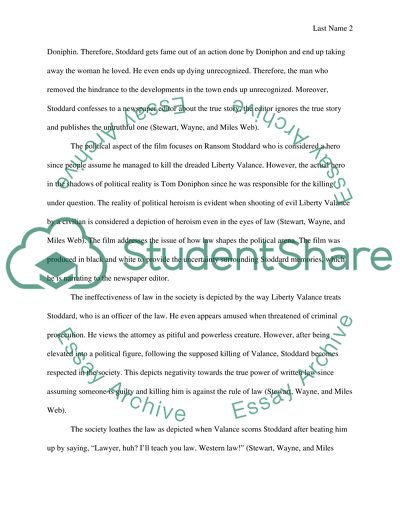Cite this document
(“How does politics construct morality in John Fords The Man Who Shot Essay”, n.d.)
Retrieved from https://studentshare.org/visual-arts-film-studies/1613533-how-does-politics-construct-morality-in-john-fords-the-man-who-shot-liberty-valance-1962
Retrieved from https://studentshare.org/visual-arts-film-studies/1613533-how-does-politics-construct-morality-in-john-fords-the-man-who-shot-liberty-valance-1962
(How Does Politics Construct Morality in John Fords The Man Who Shot Essay)
https://studentshare.org/visual-arts-film-studies/1613533-how-does-politics-construct-morality-in-john-fords-the-man-who-shot-liberty-valance-1962.
https://studentshare.org/visual-arts-film-studies/1613533-how-does-politics-construct-morality-in-john-fords-the-man-who-shot-liberty-valance-1962.
“How Does Politics Construct Morality in John Fords The Man Who Shot Essay”, n.d. https://studentshare.org/visual-arts-film-studies/1613533-how-does-politics-construct-morality-in-john-fords-the-man-who-shot-liberty-valance-1962.


